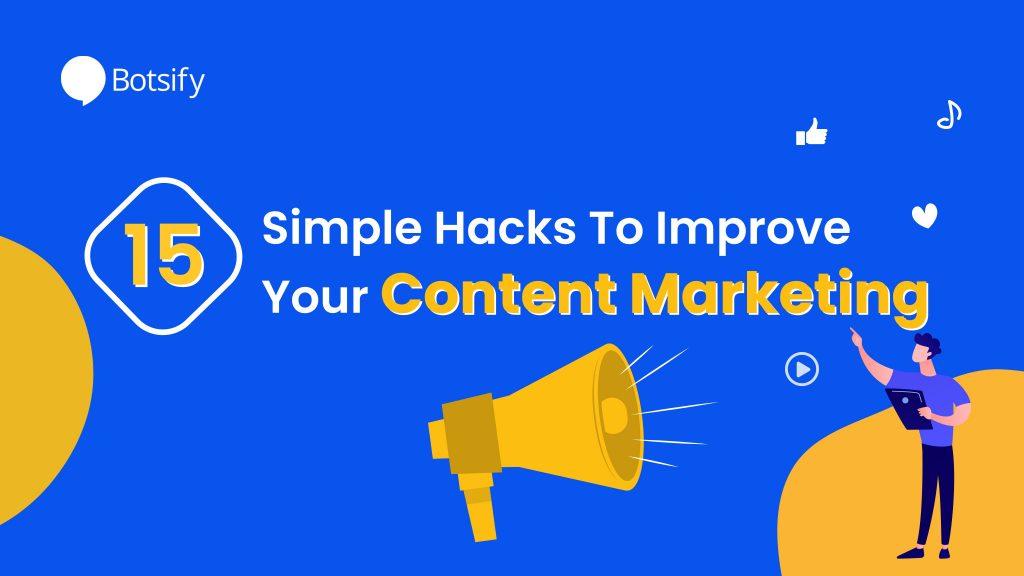In an ever-changing digital landscape, content marketing tactics are evolving at a rapid pace. Strategies that worked one or two years ago may no longer be effective. A well planned content marketing strategy can even help you get more meetings.
The benefits of content marketing are numerous and can positively impact a business’s overall marketing strategy. By creating valuable and informative content, businesses can attract and retain their target audience’s attention, build trust and credibility, improve SEO, increase website traffic, generate leads, and ultimately drive revenue growth
So, if you’re planning a content marketing campaign right now or you want to streamline your existing strategies, it’s time for a primer on how you can improve.
1. Have an FAQ section
No matter what industry you’re in or how simple you think your business’s concept is, your customers will always have questions. You can use these questions to gain your customers’ trust, but it’s also a great SEO opportunity.
Your Frequently Asked Questions (FAQ) section can’t just be a random collection of questions. You need to design the section based on what your customers actually ask your support staff or sales reps.
You can also devise your FAQ section based on your competitors’ pages.
Once you’ve compiled the questions, you need to decide how you’re going to organize them. You can have one main page for each concept and have links to specific queries about it. Or split every concept into different pages with related FAQs on the same page.
Nlyte, for example, has a detailed FAQ page that breaks down its highly technical products and services. The FAQ page on Nlyte’s website about edge data centers is a great example of how to do things right.
The company explains each concept meticulously, and links to relevant studies with a ‘Learn More’ call-to-action (CTA) button. Every section on the page is also clearly divided so that readers can digest the concepts better.
At the bottom of their page, there’s another CTA, “View all FAQs,” that leads back to the main FAQ page.

Inter-linking sections are also a must. Don’t make your readers go back to the start after every question. Instead, you can lead them down a planned route of related queries that tell them more about your products.
Another smart tactic that Nlyte employs is having a form that you can use to download its ebook. The form lets Nlyte gather user information while helping users who are still in the early stages of the buyer’s journey.
You can use forms to allow users access to any informational resource, be it a case study, whitepaper, report, or eBook, in exchange for their email address.
To further step up your game, crop relevant videos available online and add them to the various FAQs. This will grab the attention of the users instantly. Make sure to check your content for plagiarism and grammatical errors as these hamper a brand’s image.
2. Optimize your live chat
Salesforce’s 2020 study revealed that 83% of customers expect to engage with someone immediately when contacting a company.
Customers love live chat because it provides instant resolutions with a human touch.
While most companies offer live chat these days, it’s worth re-examining whether your customers’ live chat experiences are the best they could be.
Design your live chat in a way that helps you address customer needs quickly, keeps them engaged, and at the same time helps you segment your buyer personas.
If you use an intuitive chatbot, then you have another opportunity to link customers to your FAQ page or some other helpful content on your site.

The idea is to create an interwoven system of links that can lead customers to your content. It provides value to the customer, and they keep coming back more.
Some businesses are leveraging this by adding 1-2 FAQ links as soon as customers click on the Live Chat button.
3. Use review articles and lists
Review articles and lists combine the best of both worlds. It’s scannable content that’s easy to digest and simultaneously proves your expertise.
SEMrush’s research showed that lists get 80% more traffic than other types of articles.
A “top X” or “ X best” list, such as this review of the top credit repair companies, allows you to build authority. You can establish your experience in the niche with a detailed review for each item on the list. List-based reviews also show that you’re not biased. You’ve included competitors in the article, which goes a long way.
From a marketing standpoint, review lists create a simple process that converts readers into buyers. A user that is interested in a book summary app, for example, is already showing buying interest in the product.
When they read a review showing that your app is the best, you can lead them down the sales funnel with the right links and CTAs.
In the top credit repair companies example, they included partner links that send users to a registration form rather than a generic homepage.
4. Nail your keyword research
If your goal is to exponentially grow organic traffic, then you need to pursue the right topics.
Choosing a topic that is high volume but too competitive will likely lead to you never ranking on the first page and generating meaningful traffic. Likewise, choosing a topic that is low volume might be easier to rank for, but the traffic potential might not be high enough to make it worthwhile.
Finding the sweet spot will depend on your own site’s authority, and your resources for promotion and link building. An industry leader will be pursuing very different keywords compared to a brand new personal blog.
Before you start writing, check out the data. Look for search volumes, and look at competition. What’s the maximum potential traffic you could gain by ranking #1? How authoritative are the current ranking domains? How many backlinks do their pages have? Taking the time to include this step in your content planning will prevent you from wasting time on keywords without good potential. You can do this by using a research tool such as Ahrefs or Mangools.
5. Create clickable headlines
With thousands of blogs and social media posts shared every day, you need to find a way to make users stop scrolling and give your content a chance.
This is impossible if your headlines aren’t relatable or engaging. Depending on the topic, you need to create headlines that evoke emotions, make users curious to find out more, or solve user problems.
You should also optimize your headlines and titles for SEO. They need to be close to what users actually search for on Google.
For example, someone looking to start a podcast will do a search looking to figure out how they can profit from it regardless of their niche. The phrase “How to Make Money Podcasting” is a common question, which is why Buzzsprout’s article is titled exactly that.
On average, list and how-to headlines were the best performers in 2020.
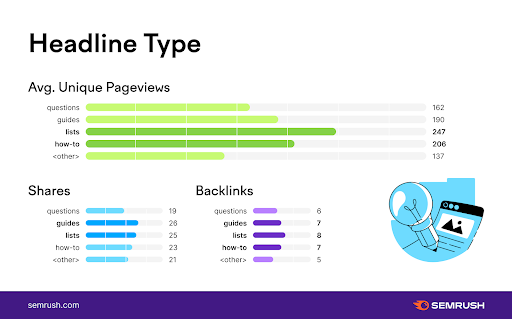 (Image source)
(Image source)
Other SEO tactics like the length of the headline, keywords, etc., are dependent on the niche. Viral pop or news-based articles, for example, have lengthy, emotion-based titles, while B2B guides and explainers have succinct titles that get straight to the point.
But for most industries, longer headlines perform better than shorter ones.
6.Prove your worth
After years of content marketing campaigns, customers can sniff out short form PR pieces easily. Search engines also have algorithms to flag this kind of content and automatically give them a lower SERP ranking.
You can’t just say you’re the best in your niche. Your content needs to prove it. It must be in-depth and provide more value than your competitors.
In recent years, content that is 5,000+ words in length performs better than shorter articles (500-1,000 words).
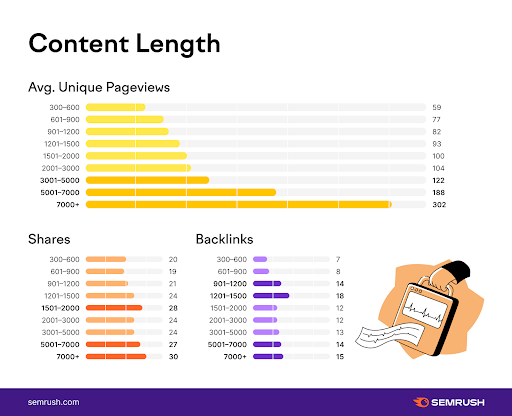
Longer articles provide in-depth information to users, making them more likely to share either the whole article or parts of it.
For example, monday.com’s guide to project management is a great example of long-form content. Using multiple neatly divided sections and images, the article delves into every aspect of project management.
The article isn’t a pushy sales pitch either, with the CTA to use the platform only appearing at the end. While every user who reads the guide isn’t going to use Monday.com or a Monday.com alternative, they’re likely to share the article, which leads to more exposure and more potential leads.
It’s worth noting that shorter pieces are also valuable for users who just want a quick answer.
Ideally, your content marketing strategy will involve multiple long-form pieces complemented by shorter articles.
7. Make it mobile-friendly
Mobile devices (excluding tablets) generated 54.8% of global website traffic in the first half of 2021.
Mobile usage has become more prominent since 2017, and a majority of users have grown to expect seamless experiences regardless of the device they’re using.
Both your website and content must be mobile-friendly. This might seem obvious, but less than 25% of companies invested in mobile optimization as a top SEO tactic in 2019.
With more and more customers buying products directly from their phones, both B2B and B2C companies need to create mobile-friendly experiences, regardless of organization size. Expanding your content strategy to mobile-friendly apps like infographics for Instagram, video content for Youtube or recording a podcast for Spotify could be a game-changer.
LFA Capsule Fillers is a B2B business that sells empty capsules. While this may seem like a relatively small niche, its website has a good score on Google’s mobile-friendly test.
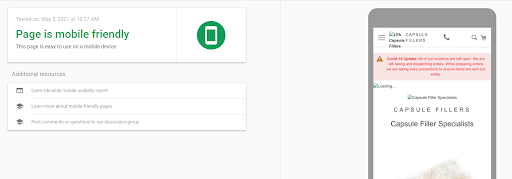
8. Leverage customer reviews
Customer reviews are the best way to gain a new user’s trust. Verified buyer or user reviews vouching for a product or service are perceived to be a fair indicator of the product’s quality and performance.
By leveraging customer reviews and adding them to your landing pages, you can help new customers buy your product or service.
Swagbucks, a coupon and cash-back shopping platform, has reviews and ratings by registered members listed right below its Old Navy coupons. A site giving away coupons might seem a little untrustworthy at first, but reading these reviews adds legitimacy to the platform.
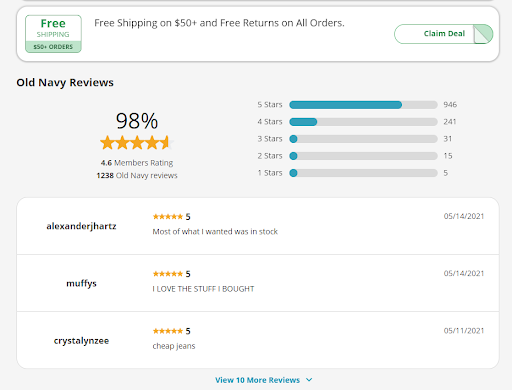
Users will know that your brand is not all clever marketing and see that your products are worth the money.
You can collect customer reviews through email campaigns, incentivized marketing campaigns or even through custom QR codes on product packaging or discount coupons.
9. Improve your website
A poorly made, flashy website with uncoordinated text and images will have users clicking off in seconds.
Firstly, because it’s hard to read or comprehend anything, and secondly, because many customers liken the quality of your website to your business’s success.
When a user opens your website, a clean looking and personalized landing page with value-based copy and a descriptive CTA should greet them.
Your homepage should use established brand colors and have relevant information at the top without being cluttered or messy. This way, users will find everything they need to know right off the bat.
You should also avoid generic CTAs like “Download,” “Submit,” or “Buy Now” throughout your website. Instead, focus on a descriptive CTA that isn’t pushy.
If your landing page is offering a free eBook, your CTA button shouldn’t say “Download.” Use phrases like “Get your Free EBook Now” instead.
10. Look at the bigger picture
When you’re focused on improving your blogs or social media posts, it’s easy to get hyper-focused on that one specific element of your content marketing strategy.
You’ll be so driven to improve your blog, for example, that you let your email marketing strategy fall behind and likely lose leads in the process.
It’s important for content marketers to take a step back and look at the bigger picture. See how everything is connected and create a strategy accordingly.
You should personalize your strategy for your specific audience. Do market research and competitor analysis to figure out what you’re doing right and where you can improve.
For example, if you’re running a streaming video website, you may want to check what type of content your competitors are publishing to discover content gaps and underserved niches
Most of the tips we’ve given above work regardless of your niche or target audience, but you can always take it a step further and cater to your specific customer base.
Final Thoughts
There’s no specific guide to streamlining your content marketing because every company is different, and their target audiences have particular expectations.
What might drive engagement and sales for most companies might not work for you because your customers are looking for something else.
The tips we’ve given above are just the starting point for your content marketing strategy. Use them and add your personal touch based on research to entice your target audience.

